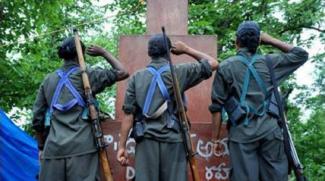Andhra Pradesh and Naxal Outfits: Again on Collision Course
It took the Andhra Pradesh government at least thirteen months to realize that its much-publicized honeymoon with the Naxal groups was a damp squib. Instead, the Naxals used the period as an opportunity to regroup, rearm, and consolidate in new areas.
After the breakdown of peace talks on January 17, 2005, the state has been reeling under the heat of Naxal violence. Since January this year, there have been approximately 254 deaths, including 108 Naxalites, 16 policemen and 130 civilians and political activists. The YSR Rajsekhar Reddy government in Andhra Pradesh re-imposed the ban on the Communist Party of India (Maoist) along with its seven frontal organizations on August 17. The other banned organizations: the CPI (Maoist), the Radical Youth League, the Rythu Coolie Sangham, the Radical Student’s Union, the Singareni Karmika Samakhya, the Viplava Karmika Samakhya, the All India Revolutionary Student’s Federation and the Revolutionary Writers Association. The ban came as an immediate fall out of the outrageous killing of Congress legislator Chittem Narsi Reddy and eight others by an action team of Naxals at Narayanpet in Mahbubnagar district on Independence Day.
The YSR government could not escape the blame game for the recent spurt of violence in the state because it allegedly took the help of the Naxalites to come to power. Even in July 2004, the YSR government invited the Naxals to the negotiating table, ignoring the ground situation. It rolled back anti-Naxal operations and lifted the ban over them to open talks, unfortunately without much preparation. The government made the biggest blunder because it gave primary importance to electoral issues over national security issues. However, it was more of a fairytale, away from reality, as both sides were not at all sincere when they came to the negotiating table. As there was no agenda, the talks went nowhere. In fact, during the peace talks, the Naxals got much-sought publicity at the government’s cost by organizing rallies and village meetings.
Ironically, this was the third time that the ban had been imposed on Naxals. On May 21, 1992, for the first time, the then Congress government outlawed the erstwhile People's War Group and its frontal organizations. This followed the killing of a former minister, T Hayagreeva Chary, who was a close aide of former Prime Minister P V Narasimha Rao. However, in 1995, the then Telugu Desam government led by N T Rama Rao relaxed the ban on the People's War and its frontal outfits. The Chandrababu Naidu government re-imposed the ban in July 1996; subsequently, the TDP government renewed the ban every year.
The recent ban on the CPI (Maoist) and its frontal organizations is bound to have serious implications. More than 1700 villages in North Telangana have been classified as Naxal-affected. The state must prepare itself to witness desperate naxal attacks in the days to come, particularly in the districts of Adilabad, Nizamabad, Karimnagar, Warangal, Mahbubnagar and Khammam, which have now become guerilla zones.
Immediately after re-imposing the ban, the Naxal spokesperson Janardan sounded the Naxal game plan. “There will be no peace zone in the state. We will attack wherever and whoever possible.” As expected, the Naxal groups have started coming together to respond to the ban immediately. The Communist Party of India (Marxist-Leninist) Janashakti (Ramachandran faction) and CPI-ML Pratighatana have merged to form the new organization -- CPI (ML), which K Ramachandran will head.
Experts believe publicity is the dreaded weapon Naxals are using to create an atmosphere of terror. Past experience shows that the media is the only channel to communicate with and know the minds of Naxals, and the government must use it to solve this complex problem.
Nevertheless, the latest ‘hot pursuit’ must include the much-required healing touch, as it would help create an atmosphere for lasting peace. The government must realize that the ban in itself is no solution to the decades-old problem of naxalism in the state.
